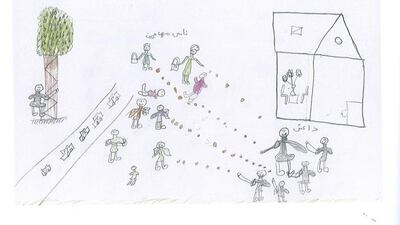As regular followers of The Art Blog will know, we are running a regular series in collaboration with the UAE’s National Pavilion at the Venice Biennale. Every two weeks, we bring you a post from one of the young interns who each spend one month working as custodians of the pavilion. They are our eyes on the ground, so they have been tasked with choosing another country’s national pavilion and bringing us a first hand report.
For the next episode, Sultan Al Ramahi, an Emirati Architecture and Fine Arts graduate from Washington State University, brings us his take on the Iraq Pavilion. Sultan writes:
The tragedy that is the current political situation in Iraq has only deteriorated over the last decade, especially with the rise of extremist groups such as ISIS. Therefore, it has become more important than ever to support Iraqi as well as Arab art in general. So, when I learned that Iraq is participating at the Venice Biennale with a pavilion featuring Iraqi artists, I knew I had to visit.
The National Pavilion of Iraq is housed in an apartment in Ca' Dandolo, a 16th-century building overlooking the Grand Canal, which I was only able to find after an Italian fellow agreed to lead the way through a dizzying array of alleyways. Curated by Philippe Van Cauteren, the artistic director, S.M.A.K. the Municipal Museum of Contemporary Art in Ghent, Belgium and who co-curated the Belgian Pavilion in 2013, the Iraq Pavilion's exhibition Invisible Beauty, features works by five artists from Iraq and its diaspora: Latif Al Ani, Akam Shex Hadi, Rabab Ghazoul, Salam Atta Sabri and Haider Jabbar.
The relationship of art to survival, record-keeping, therapy and beauty are amongst the many themes raised by the exhibition. All the works in the exhibition relate to the current political situation in Iraq. These include a series of 28 photographs created by Akam Shex Hadi. The photographs show Iraqis of different faiths and ethnicities photographed within their homes, places of worship or work, each individual encircled by a black fabric, the same way a snake would coil and suffocate a person. The black fabric is revealed to be an ISIS flag.
In my opinion, the final section of the Iraq Pavilion features some of the most powerful pieces in the whole of the Venice Biennale. Traces of Survival showcases a selection of drawings by refugees in Iraq, selected by Chinese artist Ai Weiwei. The drawings are simple as they are by people who have no background in the arts but have used the opportunity to express their true emotions. They are vibrant and from afar seem joyful. However on closer inspection the sinister truth reveals itself, each brush stroke and detail conveys the pain and suffering that has occurred, black figures stand in the foreground shooting at women and children. The colourful and vibrant tones cloak the real life scenes that we have all become accustomed to seeing on the news.
The pieces were collected in in late 2014, when the Ruya Foundation (the commissioner of the pavilion) visited refugee camps in Northern Iraq and provided drawing materials to adult men and women in the camps. Ai Weiwei then selected a number of the refugees’ submission to be displayed at the Pavilion, and to be published in a publication of the same name.
For a country that has been subject to war and suffering for so long, the Iraq Pavilion chose to address its sad reality full on. It is unfortunate that much of Arab art focuses on the region’s politics. I think it is also necessary, as art serves as a vehicle to carry the message of the unfortunate and the oppressed. And with the demolition of cultural heritage by ISIS, it is our responsibility to support Arab culture and art now more than ever.
To read more about the National Pavilion of Iraq: https://www.ruyafoundation.org/en/venice-biennale/
* Sultan Al Ramahi is currently working as a professional planner at the Abu Dhabi Urban Planning Council. He likes to make art when he is not too busy with life. Keep up with him on @veniceinterns as well as on his personal account @sultanalramahi and on hashtags #veniceinterns and #uaeinvenice.

